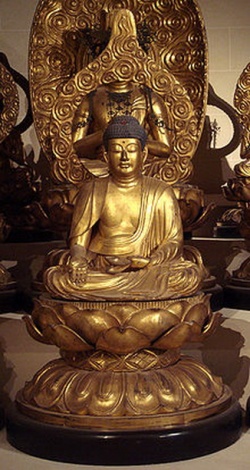Jnanagarbha
Jnanagarbha. Indian pandita who came to Samye at the time of Trisong Deutsen. Jnanagarbha's Commentary on the Distinction between the Two Truths is a concise and lucid introduction to the issues and personalities that dominated Indian Madhyamaka thought on the eve of its introduction to Tibet.
As an example of the influential but little-known Svatantrika branch of the Madhyamaka School, Jnanagarbha’s work shows quite vividly how the commitment to reason in the search for ultimate truth shaped not only the dialogue between Madhyamaka thinkers and members of other Buddhist schools, but also the evolution of the Madhyamaka tradition itself.
Jñāna means knowledge or wisdom, and is a key concept in the Yogachara tradition. Garbha literally means womb or embryo, and links to the Tathagatagarbha (or Buddha Nature) tradition. In terms of practice, it's an ongoing reminder that you need to bring together your intellect and your gut feelings into an integrated whole. Jnanagarbha in the 8th century, the doctrine of the Two Truths, absolute truth (paramarthasatya) and conventional truth (samvritisatya), resolves the apparent conflict by stating that ultimately things do not exist as such, which is to say, do not exist as they seem to exist, substantially.
